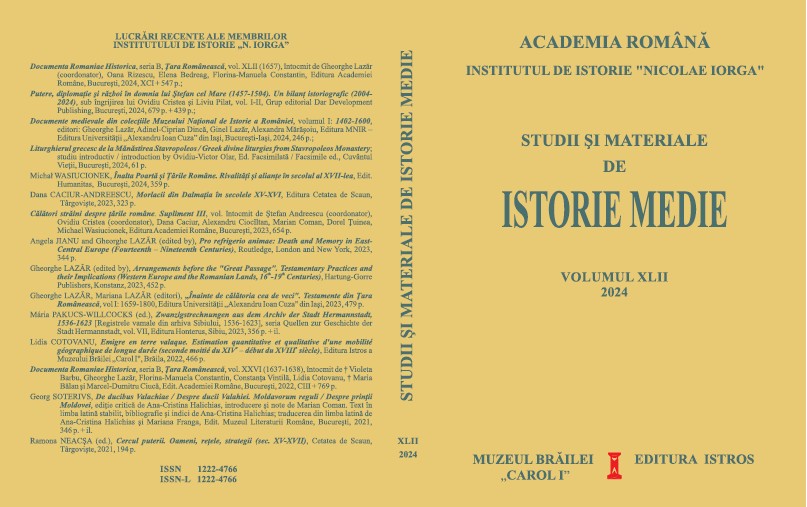Originea tesaliană a Mavrocordaţilor: de la „gelepie” la domnie
The Thessalian Origins of the Mavrocordats: from Animal Trader to the Princely Throne
Author(s): Lidia CotovanuSubject(s): History, Diplomatic history, Economic history, Middle Ages, Modern Age, 16th Century, 17th Century
Published by: Institutul de Istorie Nicolae Iorga
Keywords: Skarlatos Grammatikos (Scarlat Grama); Grammatikos family; çelep; Thessaly; Phanar; Wallachian Mihnea family; Mavrocordat family;
Summary/Abstract: Greek historiography is aware that the maternal grandfather of Alexander Mavrokordatos the Exaporite, Skarlatos Grammatikos, referred to as Scarlat Grama in Romanian sources, originated from the Thessalian region of Agrapha. Based on the names given to him or attributed to him by his contemporaries – Grammatikos, Vlasios, and Vodino – we gain new insights into the life and legacy of this prominent figure, a “meghistan” of the Ottoman Empire. He was called Vlasios because he came from the village of Vlasi in the Agrapha region. A sheep trader by profession, he was related to the Grammatikos family, sheep traders (çelep) from the same village, known for having founded two monasteries: the monastery of the Nativity of the Mother of God in their native village and the patriarchal stavropegial Bačkovo monastery (now in Bulgaria), where they subsidized part of the votive painting. Their descendants advanced their careers in Wallachia during the reigns of Constantin Brâncoveanu and Nicholas Mavrokordatos. Scarlat Grama was also related to the Alleimatas family, sheep traders from Vlasi, whose descendants similarlysettled in Wallachia. Additionally, his contemporaries referred to him as Vodino, a name connected to the princely title of his son-in-law Alexander the Infant, although it seems that Scarlat himself married a relative of the Wallachian Mihnea family. Reconstructing his network of relatives, commercial agents and friends, using unpublished or little-known sources, allows for a more comprehensive portrait of this Phanariot avant la lettre, who secured for his descendants a prominent position in the power circles of the Ottoman capital and paved their way to the thrones of the Romanian Principalities.
Journal: Studii şi Materiale de Istorie Medie (SMIM)
- Issue Year: XLII/2024
- Issue No: XLII
- Page Range: 137-171
- Page Count: 35
- Language: Romanian
- Content File-PDF

